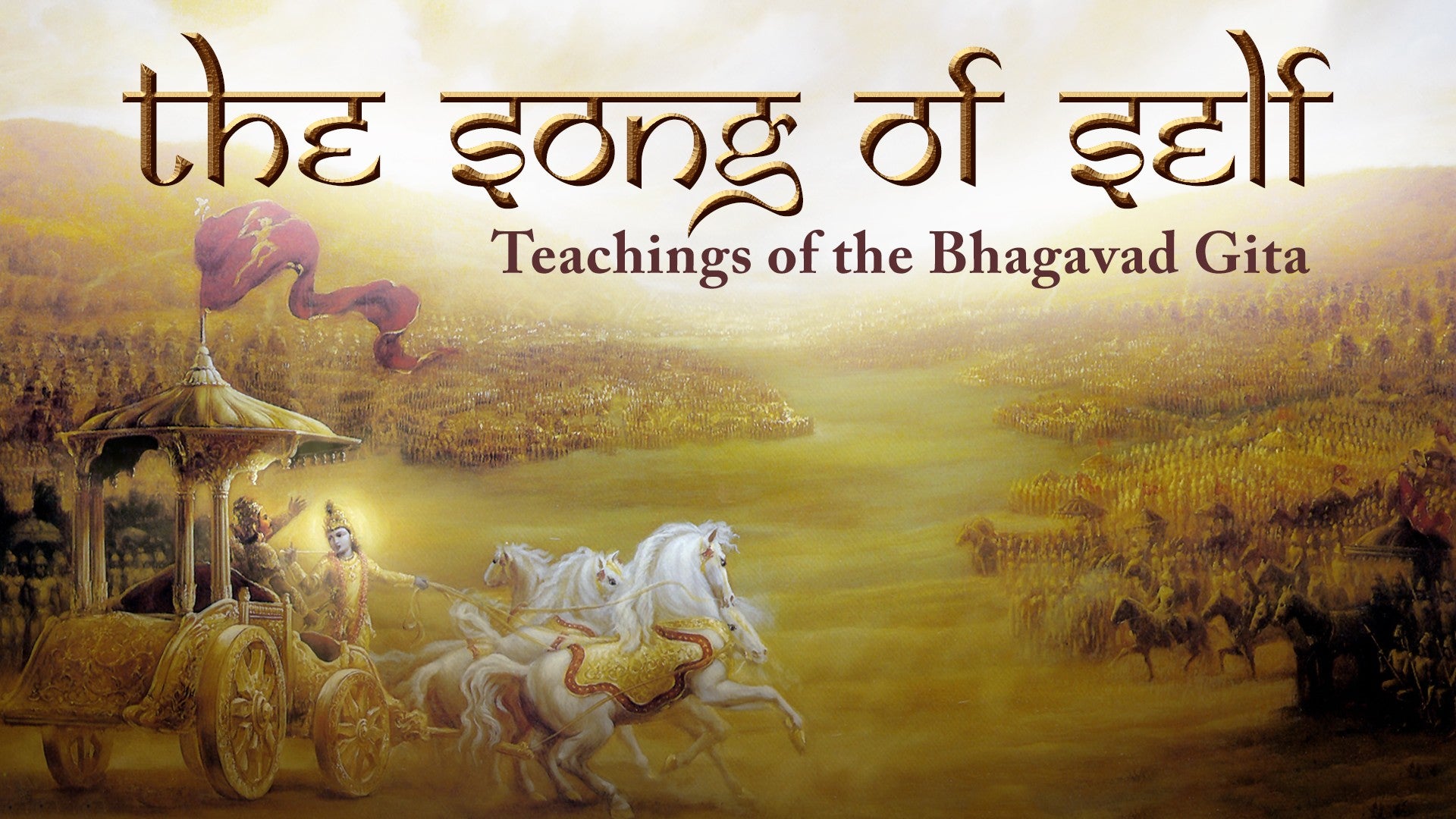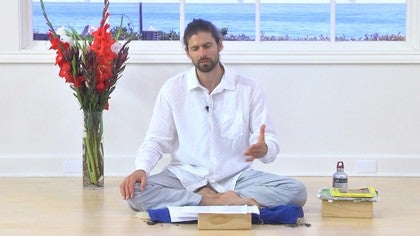Description
Follow along with the attached PDF's: the transliteration of Chapter 2, Sanskrit Recitation and Metre, and Sanskrit Alphabet.
About This Video
Transcript
Read Full Transcript
So in verses 11 to 19, which we're going to have the corner response from just a few moments, we encounter a few places where the line or the verse could be recited in more than one way. So if you look, for example, at the 13th verse and the second line, you'll notice that before Dira there is an R. Now this R has been transformed from an H with a dot. If we split the line in two, if we said, we pronounce it slightly differently. We'd say, but when the runs into this next word, which begins with D, then the H with a dot gets transformed into the R. This is a feature what they call Sandhi in Sanskrit where the ending of a word can sometimes change because of the word at the beginning of the next word that follows it. And in most instances, one of the main reasons for this is actually to facilitate clear and easy recitation.
The listener can still identify very readily that there was that H with a dot, but it also helps flow into the next sound. So in the 13th verse, if we were reciting slowly, we might say, but if we were in a faster flow, saying the whole line in a single breath, for example, both are correct and both are completely accurate. So it is possible that in this call and response section now and again, I might recite things ever so slightly differently to when I recite the whole chapter all the way through. So if you encounter that and you think, what's happening there? That's what it is, is that when we do it more slowly, or we kind of split a line into, sometimes the ending will be voiced ever so slightly differently to when you join them together.
We have further examples of this in the 14th. So if you look, for example, again in the second line, in the 14th verse, it's the whole line together, it's, however, if we split it into two, then it would be, So when it's split, we have the, and then, but if we join them, it's more flowing. Also in this line, you can notice something that will crop up fairly frequently in Sanskrit. We have this M with a dot that we don't necessarily voice like an M. So the Anaswara sound here, at the end of the Agama Pailonitya's tan, this tan word is then followed by S and T, which are dental sounds.
And so the M with a dot can be pronounced as the dental nasal N. And so we say, Agama Pailonitya's tan sthitic shasva barata. If you say tan sthitic shasva, more like an M, that's fine, it's not incorrect. The listener will still understand. But if you're reciting a little bit more quickly, you'll find that maybe the tongue finds it much easier to make the corresponding nasal sound for the sound that follows.
So it might naturally, if you recite many times, you might find, if you're doing it more slowly, Agama Pailonitya's tan sthitic shasva barata. But if you get a little bit quicker, it might just transmute into more like a N. Agama Pailonitya's tan sthitic shasva barata, like this. We have a similar example in the 16th verse, again in the second line. If that we recite the whole line together, but if we split it, and again, both are correct.
So if you hear both of these, you might also hear other recitations, other recordings of the Gita, both are correct. Generally, if there is that discrepancy, it's probably because in one case, the whole line is being done together. And so Sandi rules, the rules of joining sounds together, apply. But if we split the line in two, then you can voice it slightly differently, and that's all it is. And both are correct.







You need to be a subscriber to post a comment.
Please Log In or Create an Account to start your free trial.